Hosted by OSOS , contributed by Laurianne on 8 March 2021
Présentation du projet
Imaginons un objet astronomique s’approche de la Terre. De quoi s’agit-il ? Est-ce un danger ?
Comprendre le monde qui nous entoure, développer son esprit critique, résoudre des problèmes complexes, travailler dans un contexte collaboratif, communiquer efficacement, développer un état d’esprit scientifique … toutes ces compétences font partie de celles que les élèves doivent acquérir pour devenir un citoyen éclairé dans un monde qui évolue rapidement (21st century skills).
Ce projet a pour objet un apprentissage durable des bases de l’astronomie permet. Il de solliciter toutes ces compétences. Il se déroule en partie à l’école et en partie dans un centre de vulgarisation scientifique, la Cité de l’espace.
Dans ce projet, la première partie, en classe, consiste à initier les élèves aux bases de l’astronomie et à comprendre la position de la Terre dans le Système solaire. Ensuite, une journée de visite de la Cité de l’espace est organisée avec un atelier spécifique et des spectacles pédagogiques. Au cours de l’atelier, les élèves se familiarisent avec la démarche et rigueur scientifique. Les élèves sont acteurs et apprennent à travailler en petits groupes autonomes et à collaborer. Ils réalisent des expériences, effectuent des observations, tirent des conclusions et exposent leurs résultats à leurs pairs. Pour finir, une restitution plus poussée du travail des élèves lors des ateliers a lieu en classe.
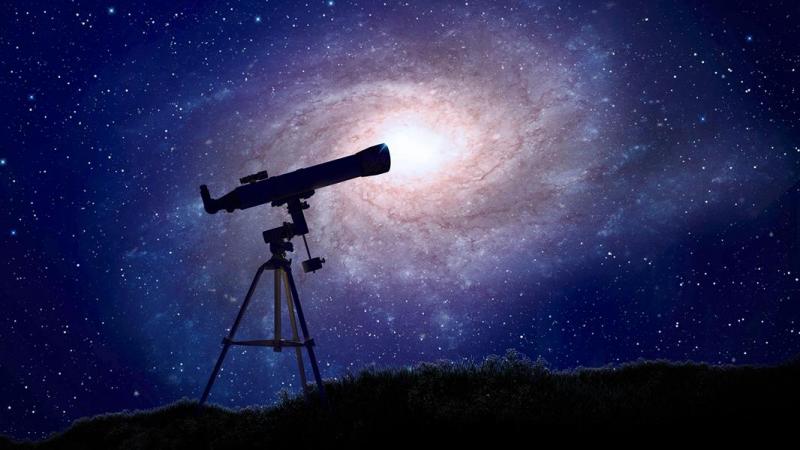
Les objectifs d'apprentissage
- Réaliser plusieurs expériences en autonomie
- Utiliser du matériel scientifique et pédagogique
- Utiliser des outils numériques
- Suivre une démarche expérimentale
- Suivre un protocole
- Travailler en collaboration
- Communiquer avec les pairs
- Découvrir la réalité du travail scientifique
Principes RRI
L'un des aspects clés d'OSOS est l'inclusion des principes RRI - Responsible Research and Innovation (plus d'informations sur RRI-Tools.eu). Voici comment cet accélérateur s'intègre dans le modèle RRI :
| Gouvernance |
Les élèves seront en mesure de comprendre le monde environnant, de développer un état d'esprit critique et scientifique en résolvant un problème complexe avec l'aide d'un centre de sciences. C'est à dire : Les étudiants peuvent apprendre l'astronomie et le système solaire pour mieux comprendre notre place dans l'univers avec l'aide de la Cité de l'espace. Un atelier d'astronomie sera réalisé à la Cité de l'espace avec une visite de toutes les installations. Le centre des sciences offrira également une série d'activités à réaliser en classe. |
| Engagement public |
L'atelier d'astronomie est basé sur une approche transdisciplinaire et collaborative. Tous les étudiants partagent la responsabilité de résoudre des problèmes complexes en travaillant en petits groupes sur différents aspects et de discuter ensemble de leurs résultats, en obtenant une rétroaction de l'éducateur du parc scientifique et d'autres étudiants. C'est à dire : Les élèves doivent comprendre si un objet astronomique s'approchant de la Terre peut mettre en danger la vie sur Terre ou non. Ils peuvent obtenir des commentaires sur leur travail de l'éducateur du centre scientifique, enseignant, d'autres étudiants et des scientifiques de l'événement. |
| Egalité entre les sexes |
L'activité est établie avec une approche non sexiste, elle profitera aux hommes et aux femmes. C'est à dire. : Les étudiants agiront en tant que scientifiques et discuteront de leurs résultats avec une approche non sexiste. |
| Education scientifique |
Les élèves utiliseront une approche scientifique pour résoudre un problème complexe. Ils devront développer leur esprit critique et analytique pour trouver la solution au problème. C'est à dire : Les élèves se sentiront autonomes en résolvant eux-mêmes un problème complexe d'astronomie. |
| Ethique |
Les étudiants partageront la responsabilité du projet, en conformité avec l'intégrité de la recherche et les valeurs sociales de la science. Le projet consiste à réfléchir à leur place dans l'univers et si leur vie peut être menacée. Ils sont plus susceptibles d'agir en tant que citoyens responsables. C'est à dire : Les élèves seront responsables de comprendre si un objet astronomique peut mettre leur vie en danger. Ils doivent mener des expériences intégrant l'intégrité de la recherche |
| Accès libre | De nombreuses ressources sont disponibles en ligne pour en savoir plus sur l'astronomie et notre place dans l'univers. |
Les partenariats possibles
| La Cité de l'espace (centre scientifique) |
Atelier d'astronomie et données scientifiques lors de la visite |
| Observatoires |
Visites / Discussions avec un astronome professionnel |
| Universités | Discussions avec des scientifiques |
| Parents |
Réaliser des expériences à la maison. Assister leurs enfants dans les activités de plein air (expérience / observation des étoiles) |
![]()
Ressources nécessaires
En ce qui concerne l'atelier, la Cité de l'espace fournira tout le nécessaire.
- Images de planètes du système solaire
- Des images des différents petits corps du Système Solaire (astéroïdes, comètes, météorites ...)
- Une soucoupe
- Un glaçon d'eau et de sable
- Papier crêpon
- Ruban
- Un séchoir à cheveux
- 2 balles de tennis
- De la pâte à modeler
- 9 aiguilles à coudre
- 8 petites boîtes
- Bandage en plâtre
- Papier journal
- Une boîte (1,10 m x 1,10 m), ficelle, règle, supports (bois ou carton)
- Ordinateurs avec un accès interne
Pour plus d'informations: http://scolaires.cite-espace.com/activites-pedagogiques/primaire
Organisation en charge de cet accélérateur
Cet accélérateur a été développé par Laurianne Palin et Christophe Chaffardon de la Cité de l'espace.
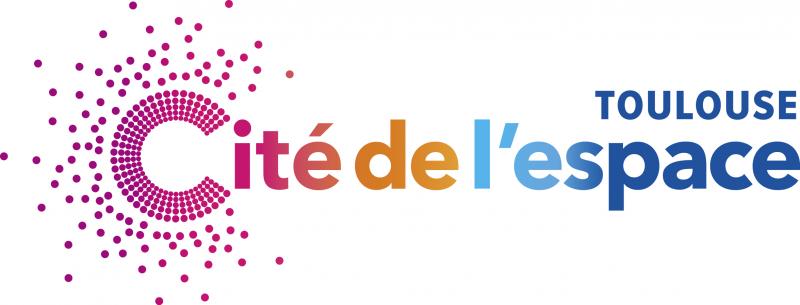
Laurianne Palin - l.palin@cite-espace.com
Christophe Chaffardon - c.chaffardon@cite-espace.com
La Cité de l'espace - Avenue Jean Gonord - Toulouse - France
Se sentir
Addressed challenge : Let's assume that an astronomical object approaches Earth. What is it ? Is it a danger for us ?
Students need to understand the world they live in to be able to make responsible decisions. In this activity, they will develop critical and scientific mindset, resolve complex problems, work in a collaborative environment, communicate efficiently … All these skills are part of the skills a student must have to be a responsible citizen in a world constantly changing (21st century skills). In this section they will learn more about the solar system and what is in it, to understand our place in the univers.
Session 1 - Discover the 8 planets of Solar System - Expected time: 90 minutes
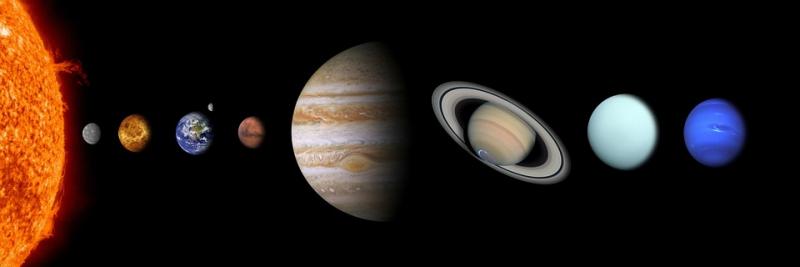
Starting from a planet picture, engage a reflection with the students to give them knowledge about the planets.
Example: where does the Mercury’ Craters come from? Why are such craters not visible on Earth?
Objectives:
- Discover characteristics of planets of the Solar System.
- Analyze and comment pictures.
- Practice "comparative planetology”
Activity:
- Projection of pictures : compare the first quarter of Mercury to the first quarter of the moon / explain other planets & satellites
- Discuss why does the Mercury’ Craters exist? And why there are or not craters on other planets?
Needs: Solar system planets pictures
Session 2 - The small bodies of the Solar system - Expected time: 90 minutes

Credits: NASA, ESA and D. Jewitt (UCLA)
Discuss the presence of small bodies in the Solar System and their differences: asteroids, comets, dwarf planets (eg Pluto).
Objectives:
- Identify the different small bodies of the Solar System.
- Analyze and comment pictures.
Make a comet ‘model: ice cube placed on a saucer to which is glued a crepe-paper band, the Sun is represented by a hair dryer (source of heat)
Rules:
- The comet is the ice cube (mode of water and some sand, dust). It’s in a saucer with crepe-paper which represent the tail of the comet.
- The sun is the hair dryer, source of heat.
Activity:
- A student takes the hair dryer and puts it in the direction of the ice cube.
- An other student takes the saucer with the ice cube and does an elliptical orbit around the hair dryer. In fact, when the saucer is close to the hair dryer the ice cube melts and the dust escapes.
Needs: pictures of the various small bodies of the Solar System (asteroids, comets, meteorites ...) / a saucer / an ice cube made of water and some sand / crepe-paper / tape / a hair dryer
Session 3 - A Martian rover - Expected time: 90 minutes
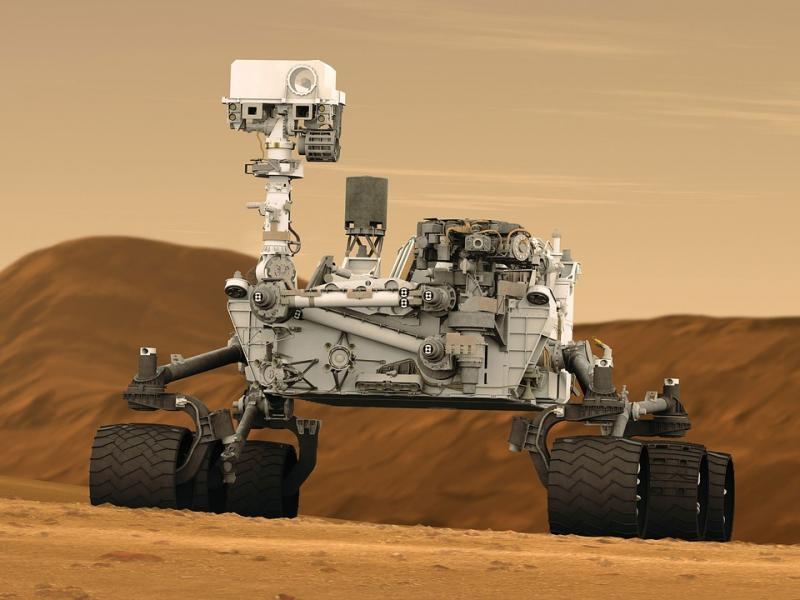
Credit : Nasa
Game to understand the principles of the transmission of information. Four roles: engineers (1 group), signals (1 group), electronic brain(1 pax), rover (1 pax). The aim is the rover has to take an object on Mars.
Objectives:
- understand how to drive a rover, understand the notion of transmission of information by a sequence of command.
Activity:
- Game progress: engineers whisper orders or questions to signals. Signals go to Mars zone and give orders or questions to the electronic brain(if it’s a question, the electronics brain can just answer “Yes” or “No”). The electronics brain give orders to the rover (the rover mustn’t talk)
- Classroom configuration :
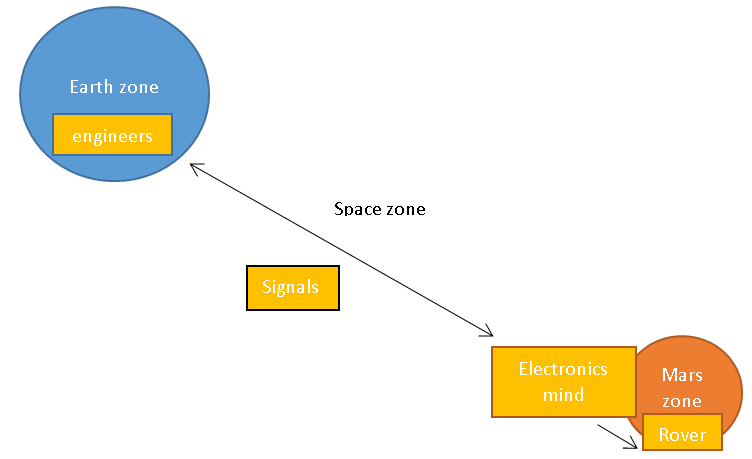
Imaginer
In this section, they will learn how to solve a complex problem with a scientific approach.
Session 1 - Workshop at the Cité de l'espace - Expected time: 1 DAY
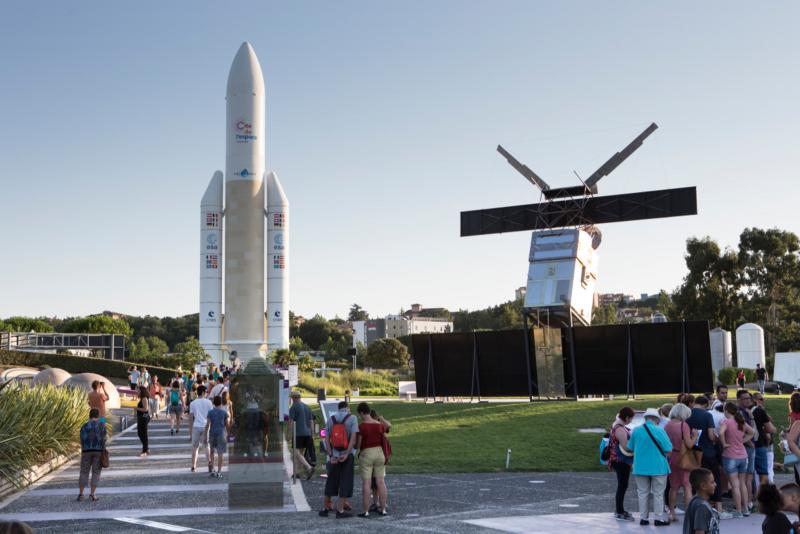
- In small groups of 3, students will have to carry out several experiments in autonomy (FEEL) using scientific and educational materials: measuring instruments, models, chemistry bench, iPad tablets ...
- Manipulations, experimental approach (IMAGINE), collaborative work, oral restitution (SHARE).
- Manufacture of a mini-comet using ice and coal, reproduction of impact craters and tsunamis using steel balls, combustion of a marshmallow, physico-chemical analysis of meteorites, Asteroid deflection simulation using air cushion mobile and ice tubes, realization of a model of the Solar System (CREATE).
Needs: Cité de l'espace provides everything needed.
Session 2 - Planets mythology - Expected time: 90 minutes

Documentary research is needed to understand the links between planets name and the mythology gods name. We can also discuss about the name of the days of the week.
Objectives :
- Experimental sciences and technology : sky and Earth
- The motion of the Earth (and planets) around the Sun
- Identification of time : reading the calendar
- History : the Antiquity
- Foreign languages
- Discovering the origins of the names given to the planets of our Solar System
- Introduce some elements of Greek and Roman mythologies
Activity:
- Students complete this chart :
|
In order from the Sun |
Planet name |
Planet characteristic |
Roman god characteristic |
Greek god name equivalent |
|
1 |
|
|
|
|
|
2 |
|
|
|
|
|
3 |
|
|
|
|
|
4 |
|
|
|
|
|
5 |
|
|
|
|
|
6 |
|
|
|
|
|
7 |
|
|
|
|
|
8 |
|
|
|
|
|
9 |
|
|
|
|
- With these information:
- Planet characteristic : the planet without atmosphere / the red planet / the planet of life / the hottest planet / the biggest planet / the other blue planet / the ringed planet / the planet moved on its orbit /
- Roman god characteristic : god of travelers and trade / god of beauty and loved / Earth God / war God / God of Gods / God of weather and harvest / sky God / sea God
- Greek god name equivalent : Hermes / Aphrodite / Gaia / Ares / Zeus / Cronos / Ouranos / Poseidon
Needs: computer with an internet access / students can help by an astrophysicist
Session 3 - On the road to Mars - Expected time: 90 minutes
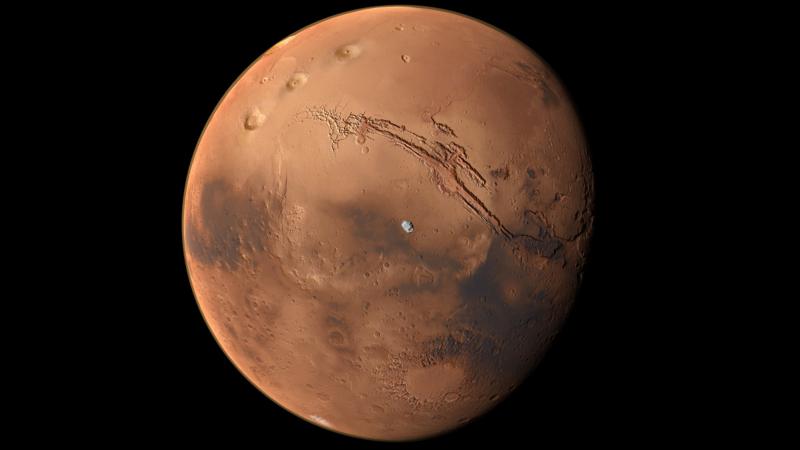
Objectives:
- Understand Earth-Mars distance and the travel time (hypothetical) with common means of transport.
- Evaluate plane and space rocket velocity.
Activity:
Complete this chart:
|
Trip Earth à Mars |
||||
|
Earth-Mars = 55 millions km |
||||
|
Transport |
Speed (km/h) |
Time trip (h) |
Time trip (days) |
Time trip (years) |
|
Foot trip |
3 km/h |
|
|
|
|
Car trip |
130 km/h |
|
|
|
|
Flight trip |
800 km/h |
|
|
|
|
Rocket trip |
|
|
|
|
Needs: nothing special
Créer
In this section they will create models of the solar system to understand and "feel" the scales at play.
Session 1 - Solar System’ Model on 240m - Expected time: 90 minutes
In this model the Sun is represented by a tennis ball. The model must be at the same scale for sizes and distances.
Objectives:
- Experimental Sciences and Technology: sky and Earth.
- The movement of the Earth (and planets) around the Sun
- Mathematics: exploitation of numerical data, quantities and measures.
- Measure lengths
- Calculating with the calculator
- Make a model of the Solar System using the same scale for sizes and distances
HELP for the teacher :
|
|
real diameter (in km) |
Model diameter (in mm) |
Distance from the Sun (in millions of Km) |
Distance from the Sun (in meter) |
|
Sun |
1 400 000 |
75 |
- |
- |
|
Mercury |
4 900 |
0,3 |
58 |
3,1 |
|
Venus |
12 100 |
0,6 |
108 |
5,8 |
|
Earth |
12 800 |
0,7 |
150 |
8 |
|
Moon |
3 500 |
0,2 |
0,38 (distance from the Earth) |
0,02 (distance from the Earth) |
|
Mars |
6 800 |
0,4 |
228 |
12,2 |
|
Asteroids |
< 1000 |
< 0,1 |
330 à 480 |
17,6 à 25,6 |
|
Jupiter |
143 000 |
7,7 |
778 |
42 |
|
Saturn |
120 000 |
6,4 |
1427 |
76,5 |
|
Uranus |
51 000 |
2,7 |
2870 |
154 |
|
Neptune |
49 000 |
2,6 |
4500 |
240 |
|
Centauri Proxima |
|
|
40 850 000 (4.3 light year) |
2180000 (2180 km) |
Needs: Two tennis balls / Some modeling clay / 9 sewing needles / 8 small boxes
Session 2 - Manufacture models of our planets - Expected time: 90 minutes
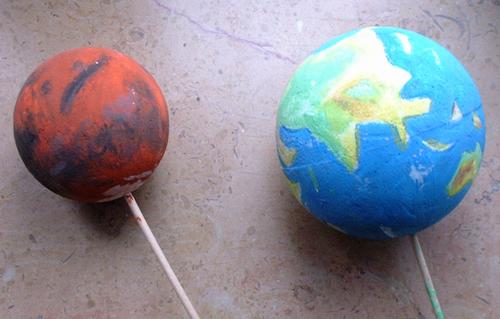
In this model the lengths and distances aren’t at the same scale.
Objectives:
- experimental sciences and technology : sky and Earth
- The motion of the Earth (and planets) around the Sun
- visuals arts
- manufacture a 3D model
- measure lengths and the perimeter of the circle
- Use scales and principle of proportionality
HELP for the teacher :
|
|
Sun |
Mercury |
Venus |
Earth |
Mars |
Jupiter |
Santurn |
Uranus |
Neptune |
|
Model diameter (mm) |
1090 |
3 |
9 |
10 |
5 |
112 |
94 |
40 |
39 |
Needs: Plaster bandage / Newsprint paper / A box ( 1,10 m x 1,10 m), twine, rulers, supports (wood or cardboard).
